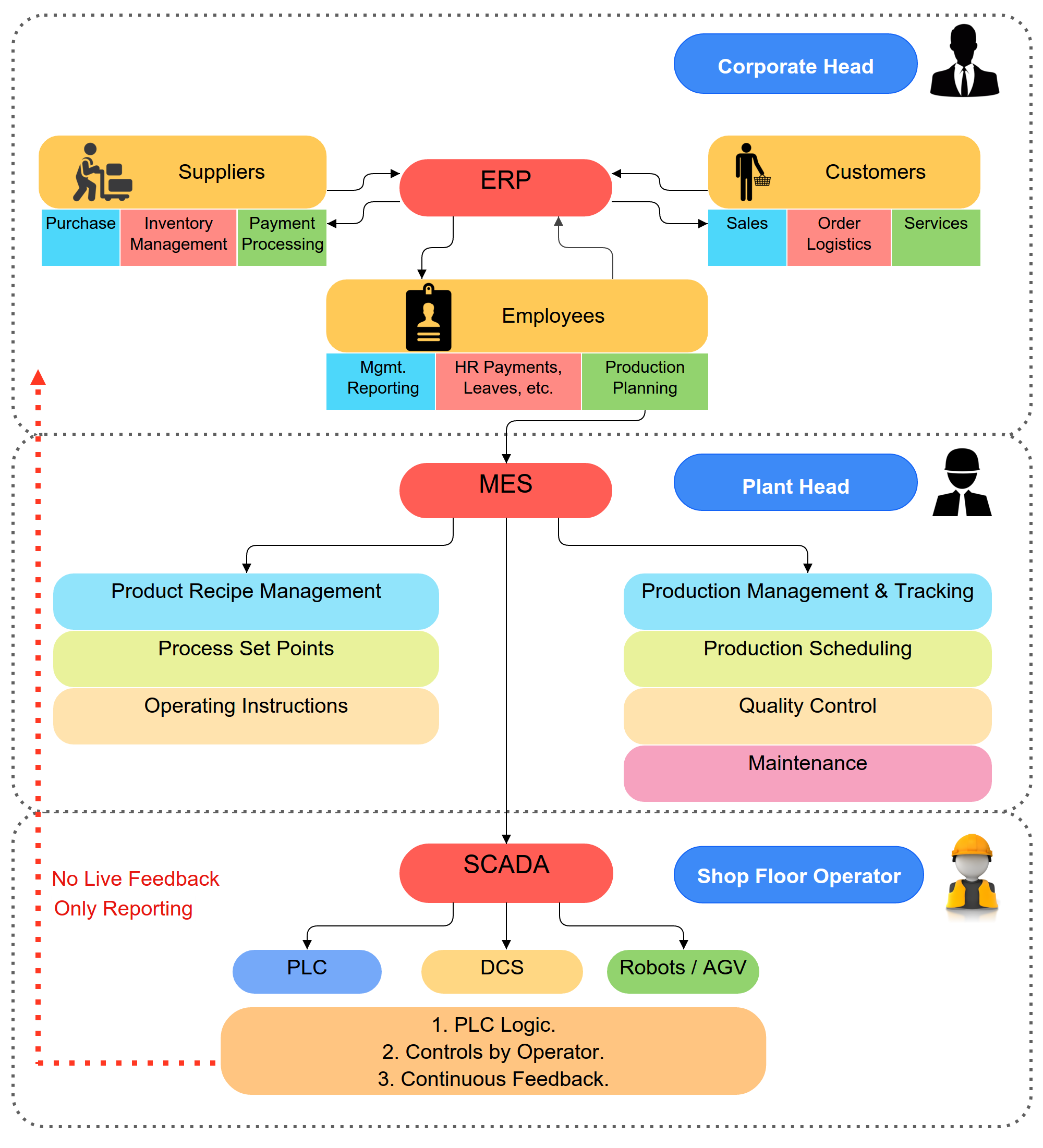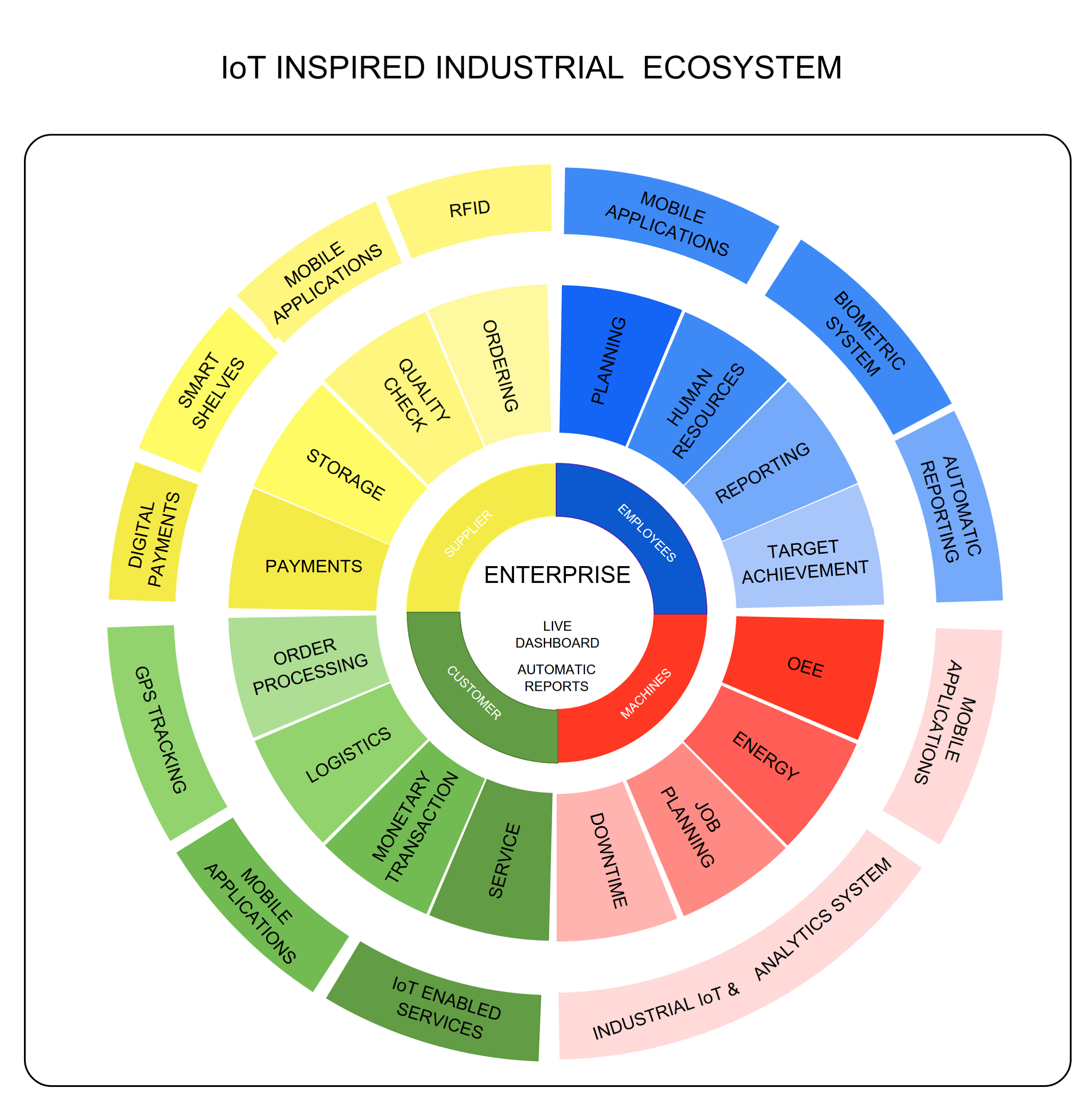Machines talk, more often than you might think. Newer machines have their own language (communication protocols) in which they can talk, while older machines may need help from smart sensors to talk to systems and the outside world. Today I am going to talk about the systems that need to talk to machines – SCADA, ERP and MES systems.

Let us start with a quick introduction of SCADA, ERP, and MES systems. Supervisory Control and Data Acquisition (SCADA) system acquires and displays machine and process data in a graphical format to help operators monitor and control the machines.
Enterprise Resource Planning (ERP) systems, as the name suggests, helps plan resources in an organization. Modern ERP systems may include material purchase and inventory management, production and operations planning, and logistics management. Some ERP systems also include accounting, sales planning, and engineering tools.
Manufacturing Execution Systems (MES) on the other hand helps plan and execute process commands for the machines, therefore helping in maintaining proper quality of the products through monitoring and maintenance of the inputs.
SCADA uses a network of computers, PLCs, controllers, sensors, and user interfaces to create a high level supervisory control for operators controlling a large process plant or machinery. The PLCs and embedded controllers in the network perform real time control of individual subsystems of the SCADA system, while the operator provides high level mode and set-point changes.
There is no doubt about the utility of ERP, MES, and SCADA systems; they have been in existence for several decades now in the factories. The real challenge is to get these systems to work together to ensure that the right person has the right information available in the right format at the right time.
Over the last half a decade, ERP, MES, and SCADA have tried complementing each other in industries, but haven’t been able to gain the expected success levels. The new developments in them over the years have also failed to garner success. This has left the gap wide open for IoT, analytics, and cloud based technologies to fill in the gap between ERP, MES, and SCADA.
Filling the Gaps with IIoT

IoT and cloud bringing it all together
In today’s extremely competitive world, corporates are trying to find better ways to improve efficiency, productivity, and enterprise wide collaboration. Some of these corporates are using process improvement mechanisms such as lean six sigma, Kaizen, and Kanban to discover and implement lean, efficient methods of doing the same tasks, while others are using technology to gain a competitive edge.
Whatever be the case, corporates are asking more out of their ERP, MES, and SCADA systems. Integration of technologies such as IoT, RFID gate, biometric systems, mobile applications, GPS, and smart shelves are basic needs for any corporate house. It’s not that SAP and Oracle ERP systems do not have these integration capabilities, just that not everyone can afford these.
Money hasn’t always stopped people from innovating, has it? Thousands of system integrators ensure that your old ERP, MES, and SCADA integrate with these new generation technologies of RFID, IoT, biometric systems, mobile applications, GPS, and smart shelves at a fraction of the cost of what you might pay the mighty IT giants. The advent of affordable and secure cloud technologies has been a major catalyst in the emergence of these system integrators.
Now you can decide what new technology, process improvements, and go to market strategies do you want to implement. You can then go ahead and find a vendor who can empower you with the power of data from your machines, plants, IT systems, and people processes; or else how will you keep your competitive advantage until you have a system which is designed to work for you?







